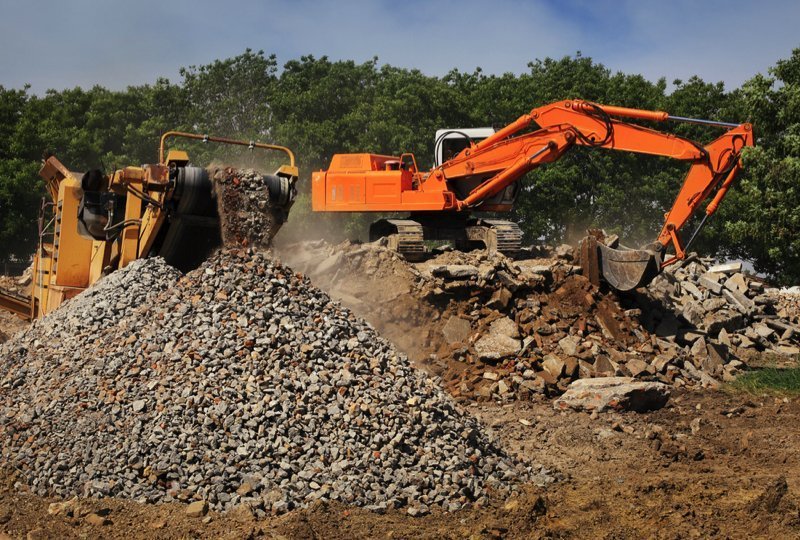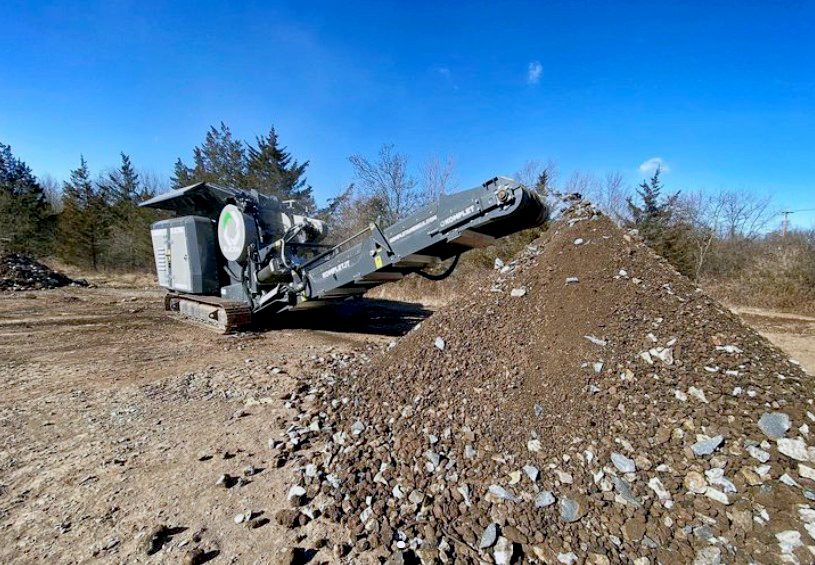The construction and demolition (C&D) industry is well-known for generating a significant amount of waste, from broken concrete to discarded metal and wood. Traditionally, the approach to handling this waste involves hauling it off-site to landfills or recycling facilities.
However, on-site waste processing is emerging as a more cost-effective and efficient solution, helping construction projects save thousands of dollars. In this post, we’ll explore how on-site C&D waste processing can significantly reduce costs related to waste disposal, transportation, and landfill fees.
1. Eliminating High Transportation Costs
One of the most significant expenses in waste management is the cost of transporting C&D waste to disposal or recycling facilities. Depending on the project’s location, the distance to these facilities can add up to considerable expenses for fuel, labor, and vehicle maintenance. By processing waste directly on-site, construction companies can eliminate or significantly reduce these transportation costs.
With on-site processing, there’s no need for constant trips to external facilities. Instead, crushers, screeners, and shredders can convert materials like concrete and bricks into usable aggregates right at the construction site. This reduction in transportation not only saves money but also contributes to a smaller carbon footprint, aligning the project with sustainability goals.
2. Reducing Disposal and Landfill Fees
Disposing of construction waste in a landfill is costly. Landfill fees, also known as tipping fees, can quickly add up, especially for large-scale projects. On-site waste processing offers a solution to this problem by reducing the volume of waste that needs to be hauled to a landfill.
By breaking down waste materials on-site and repurposing them for use in the ongoing project, the amount of waste sent to the landfill is minimized. This means fewer tipping fees and a significant reduction in overall waste disposal costs. In some cases, on-site processing can eliminate the need for landfill disposal, leading to even greater savings.
3. Savings from Recycling and Reusing Materials
On-site processing allows construction companies to recycle and reuse materials immediately, eliminating the need to purchase new raw materials. For instance, crushed concrete can be used as a sub-base for roads, walkways, or even for backfilling. Similarly, processed wood can be repurposed for landscaping or as part of temporary structures on the job site.
Recycling these materials on-site results in significant cost savings, as it reduces the need to purchase new materials. In addition, it helps avoid the costs associated with transporting recycled materials from an off-site facility back to the construction site.

4. Lower Labor Costs
Transporting waste off-site often requires additional labor, whether it’s loading trucks, driving to and from the disposal facility, or unloading. By processing waste on-site, labor can be more effectively allocated to essential construction tasks instead of waste management. This more efficient use of labor translates into direct cost savings for the project, as the workforce can focus on completing the project rather than handling waste logistics.
5. Faster Project Timelines and Reduced Downtime
Another cost-saving aspect of on-site C&D waste processing is its impact on project timelines. Transporting waste off-site often leads to project delays, especially if the waste must be processed at a distant facility. These delays can lead to increased costs due to extended labor hours and equipment rentals.
With on-site processing, waste can be managed and repurposed in real-time, ensuring that construction work can continue uninterrupted. This streamlined process can significantly reduce downtime and ensure that projects are completed on schedule, avoiding the financial penalties associated with delays.
6. Avoiding Regulatory Fines and Compliance Costs
In many areas, strict regulations govern the disposal of construction waste. Failure to comply with these regulations can result in hefty fines and other legal costs. On-site waste processing allows for better control over how waste is handled, ensuring compliance with local regulations and reducing the risk of costly fines.
7. Equipment Investment and Long-Term Savings
While there is an initial investment involved in acquiring on-site processing equipment like crushers and screeners, the long-term cost savings far outweigh the upfront cost.
Over time, the reduction in transportation, landfill, and material costs quickly adds up, making the investment highly economical for ongoing construction projects.
Additionally, owning processing equipment can provide a competitive edge, as it allows for more flexible and responsive waste management.
Conclusion
On-site C&D waste processing offers a multitude of cost-saving benefits for construction projects. By eliminating transportation costs, reducing landfill fees, reusing materials, lowering labor costs, minimizing project delays, and ensuring regulatory compliance, on-site processing can save construction projects thousands of dollars.
Not only does this approach lead to significant financial savings, but it also promotes sustainable practices, improving the overall environmental impact of construction projects.
For construction companies looking to optimize their waste management and enhance their bottom line, investing in on-site C&D waste processing is a smart and economically sound decision.

